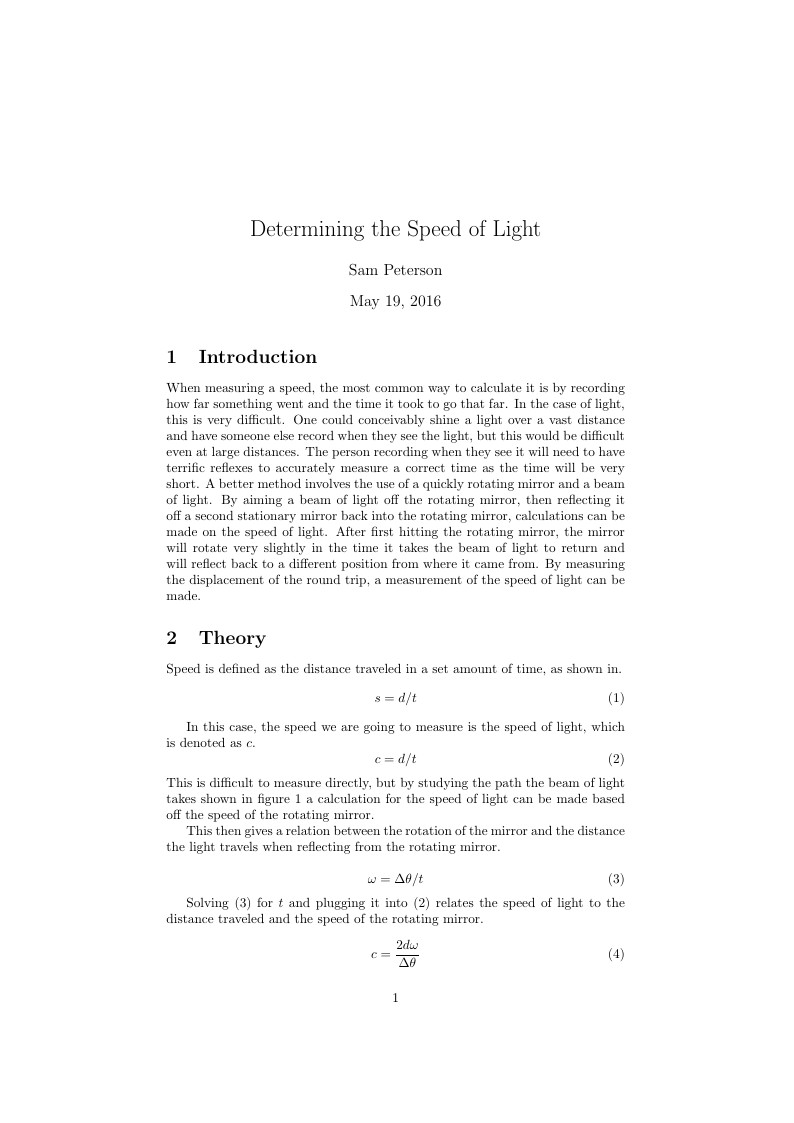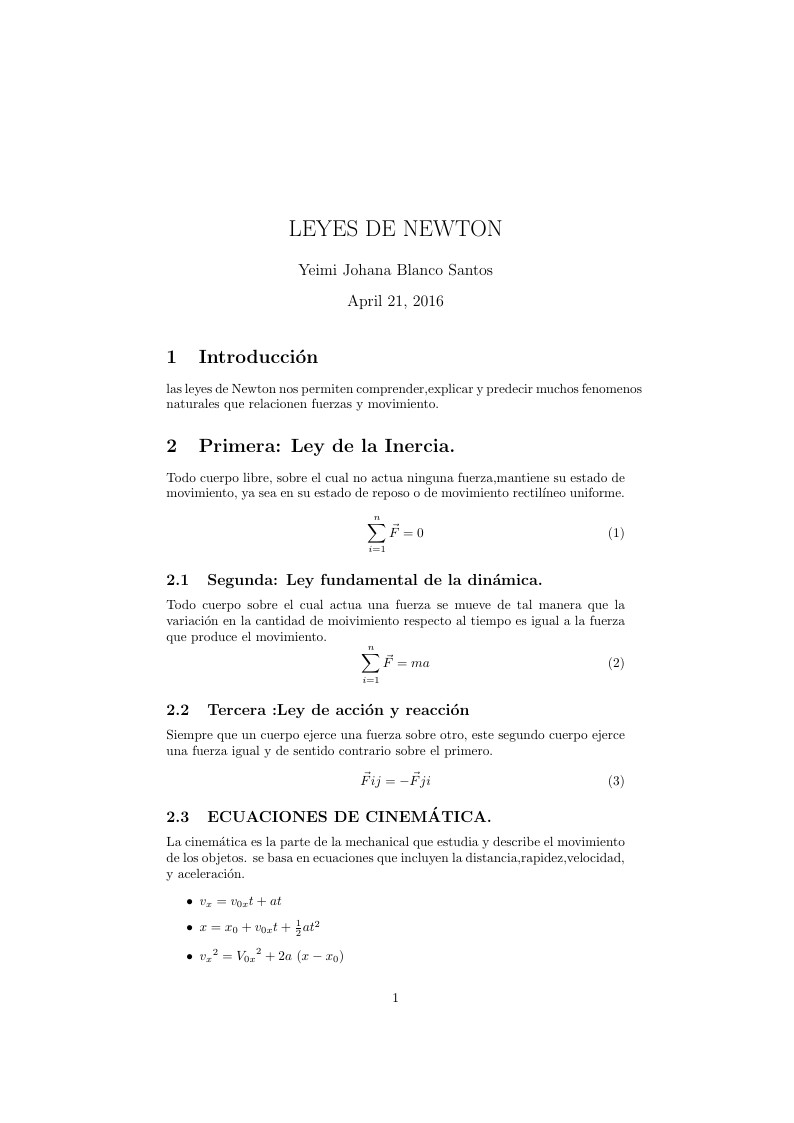LaTeX templates and examples — Math
Recent

Es posible diseñar modelos en donde la variable dependiente posea característica cualitativas, ese es el caso que analizaremos en el presente trabajo, enfocándonos únicamente en el modelo LOGIT que nos brinda ciertas ventajas en comparación a un modelo lineal de probabilidad, estimada por mínimos cuadrados ordinarios(MCO) para lo cual resaltaremos dichas diferencias. Los modelos de regresión con respuesta cualitativa son modelos de regresión en los cuales la variable dependiente puede ser de naturaleza cualitativa, mientras que las variables independientes pueden ser cualitativas o cuantitativas, o una mezcla de las dos; por ejemplo, si se está estudiando la relación entre ingresos y el pagar o no impuesto de renta, la respuesta o regresada solo puede tomar dos valores (si paga impuesto de renta o no paga dicho impuesto); otros ejemplos en que la regresada es cualitativa son si la familia posee o no vivienda propia, se aprueba o pierde un curso, padece determinada enfermedad o no la padece. La variable cualitativa en estos tipos de modelos no tiene que restringirse simplemente a respuestas de sí o no, la variable respuesta puede tomar más de dos valores, ser tricotómica o politómica, también se establecen modelos en lo que la variable dependiente es de carácter ordinal o de carácter nominal, en donde no hay preestablecido ningún tipo de orden. En este trabajo se analizara el modelo LOGIT en donde la variable dependiente es de carácter binario o dicotómico (sí o no). (Green 2001) Se trata pues de adoptar una formulación no lineal que obligue a que los valores estimados estén entre 0 y 1 ya que, la regresión con una variable binaria dependiente Y modeliza la probabilidad de que Y = 1. La regresión LOGIT utiliza una función de distribución logística, su función de distribución de probabilidad da lugar a probabilidades ente 0 y 1, y presenta un crecimiento no lineal (con mayores incrementos en la parte central).

The density of solid water, unlike most molecules, is less than that of its liquid form. Its precise value is of use in many applications. Freezing a spherical droplet of water and analyzing the changed shape from a sphere to a sphere with a slight peak in order to find the density of ice. We find the density of ice to be at 0.90 ± 1.66 · 106 g/mL. The precision of our measurement was limited by uncertainty in the angle measurements of the peak of the droplet.

When measuring a speed, the most common way to calculate it is by recording how far something went and the time it took to go that far. In the case of light, this is very difficult. One could conceivably shine a light over a vast distance and have someone else record when they see the light, but this would be difficult even at large distances. The person recording when they see it will need to have terrific reflexes to accurately measure a correct time as the time will be very short. A better method involves the use of a quickly rotating mirror and a beam of light. By aiming a beam of light o the rotating mirror, then reflecting it o a second stationary mirror back into the rotating mirror, calculations can be made on the speed of light. After first hitting the rotating mirror, the mirror will rotate very slightly in the time it takes the beam of light to return and will reflect back to a different position from where it came from. By measuring the displacement of the round trip, a measurement of the speed of light can be made.

The differential wave equation can be used to describe electromagnetic waves in a vacuum. In the one dimensional case, this takes the form $\frac{\partial^2\phi}{\partial x^2}-\frac{1}{c^2}\frac{\partial^2\phi}{\partial t^2} = 0$. A general function $f(x,t) = x \pm ct$ will propagate with speed c. To represent the properties of electromagnetic waves, however, the function $\phi(x,t) = \phi _0 sin(kx-\omega t)$ must be used. This gives the Electric and Magnetic field equations to be $E (z,t) = \hat{x} E _0 sin(kz-\omega t)$ and $B (z,t) = \hat{y} B _0 sin(kz-\omega t)$. Using this solution as well as Maxwell's equations the relation $\frac{E_0}{B_0} = c$ can be derived. In addition, the average rate of energy transfer can be found to be $\bar{S} = \frac{E_0 ^2}{2 c \mu _0} \hat{z}$ using the poynting vector of the fields.

Preinforme guia de laboratorio L4.

We present a geometric proof of the addition formulas for the hyperbolic sine and cosine functions, using elementary properties of linear transformations.

Egy kis segítség azoknak az SZTE-s hallgatóknak, akik a házi feladatokat LaTeX-ben szeretnék elkészíteni.

A simple trick to decorate Theorem-like environments with poker suits QED symbols. I did not come up with this theorem decoration style (I've first seen it here) nor with the whole code (I salvaged it from TeX StackExchange and other sources over the years). This is just my current implementation of the code.

A detailed report of findings on the altitudes which can be reached by super pressure balloons and how various factors and considerations affect this. Superpressure balloons are deployed and researched by various organisations including NASA, to solve technical limitations such as cell tower coverage as well as advancing fields of research. Balloons are used in planetary exploration, and weather prediction to teaching primary school physics. The versatile yet simple aerostat has been a valuable tool in many areas of engineering and their altitude ceiling is of great scientific interest. To solve the problem without the ability to physically reproduce the scenario, required mathematical models to be created as a means of simulating the effects of real world physics. A degree great enough to output an accurate and hence useful result without becoming too complex to be computable is the fine balance attempted to be created by this paper.
\begin
Discover why over 20 million people worldwide trust Overleaf with their work.